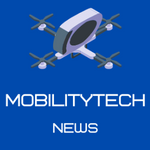Austin will be Waymo’s fourth major ride-hail city.
It’s official. Austin will be Waymo’s fourth major ride-hail city, joining Metro Phoenix, San Francisco and Los Angeles, as we continue to expand and build momentum for our commercial ride-hail business.
Waymo’s crew has been testing in and around downtown Austin over the past few months in their all electric Jaguar I-PACE vehicles to reacquaint the generalizable Waymo driver with the city. After this preliminary testing has been completed, Waymo will launch an initial phase of operations this autumn, followed by completely autonomous deployment of their first public rides in months that follow.
Waymo want for their Austin operations to be a truly useful service from the beginning, crossing a big chunk of the city at all hours of the day and night. The Waymo Driver will visit numerous popular sites, including downtown Austin, Barton Hills, Riverside, East Austin, Hyde Park, and others.
“Austin is one of the most vibrant and dynamic cities in the country, and we’ve found that the Waymo Driver is adapting to its complex cityscape incredibly quickly,” said Saswat Panigrahi, Chief Product Officer at Waymo. “Autonomous vehicles make transportation safer, greener and more accessible, and we can’t wait for Austinites to experience these benefits for themselves.”
Waymo One’s expansion to Austin is an important milestone. It means that the general public will be able to travel with Waymo in the city again, nearly a decade after Steve Mahan, who is legally blind, had the world’s first trip in a fully autonomous vehicle on public streets in Waymo’s Firefly prototype vehicle in 2015. Austin, the country’s second-fastest-growing large city economy, promises a huge commercial opportunity for Waymo’s expanding activities.
More urgently, the research to date indicates that autonomous vehicles contribute to increased road safety. In Austin alone, 125 individuals were killed in automobile incidents last year, with 51 of them being walkers or bikers. Many of them died in collisions with fast, inebriated, or distracted drivers, all of which the Waymo Driver can avoid by adhering to traffic laws and remaining alert at all times. Waymo has also taken crucial steps to communicate with and safeguard vulnerable road users, such as using our Safe Exit features to reduce “dooring” events with cyclists.
“One of the greatest access barriers for individuals who are blind is the reliance on others for transportation,” said Emily Coleman, Superintendent, Texas School for the Blind and Visually Impaired. “Whether it’s work, leisure or family obligations, they require support to get around — a luxury many of us take for granted. Providing access to autonomous vehicles gives them the ability to be independent travelers and feel empowered to seek out the lives they want without the obligation to trust strangers.”
Waymo in their blog post said:
Our important work with Austin accessibility advocates helps us tailor our ride-hailing service to some of the most traditionally underserved groups. At Waymo, engaging with and developing our product for the communities we serve begins well before deploying cars.
The Waymo Driver also improves access to sustainable transportation, helping connect many more Austinites to their local communities through an all-electric, zero-emissions ride-hailing service that could help the city meet its ambitious targets to reach net-zero emissions by 2040.
We’re thrilled to continue meeting with and learning from the local community as we prepare to launch Waymo One. Austinites who are excited to ride can sign up for our waitlist at waymo.com/waitlist.

